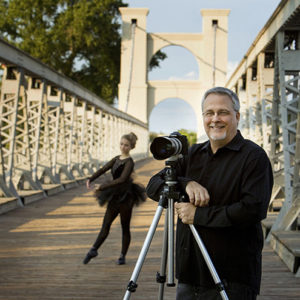 Depth of Field
Depth of Field
by Steve Kozak
M. Photog., CR.
PPA Certified
Depth of field is defined as “the area in a photograph that will be in acceptable focus.”
Simply put, depth of field determines the relative sharpness or lack of sharpness in the background (and the foreground) in relation to the subject.
Depth of field is a measurable distance. Approximately one-third of the total distance extends forward towards the camera at the point of focus and two-thirds extends behind the point of focus. For example, with a subject focused at 10 feet with a 9ft depth of field, the photographer can anticipate relative sharpness between 7 to 16 feet. (3ft in front, 6ft in back)
There are three things that control depth of field:
• F-stops
• Camera-to-subject distance
• Focal length of the lens
Controlling the depth of field allows the photographer to “soften” or “sharpen” the background to the degree that is desired for the specific image. A shallow depth of field helps to put emphasis on the subject and may help to eliminate unwanted distractions.
F-Stops
The f-stops not only control the amount of light that reaches the sensor, but they also control depth of field.

 Shallow Depth of Field
Shallow Depth of Field
A shallow DOF means that the background and the foreground will appear more out of focus.
The image at right was taken at F2.8 and has a shallow depth of field. Notice how the background is quite out of focus.
This technique allows the photographer to place the emphasis on the subject without distractions from the background.

Large Depth of Field
With a large DOF, the background and the foreground appears sharper or more in focus.
The image at left was taken at F16 and has a much larger depth of field.
A larger depth of field is useful when elements in the background are used as part of the overall composition.
Camera-to-Subject Distance
The camera-to-subject distance has a pronounced impact on depth of field.
The closer the camera is to the subject, the shallower the DOF.
The further the camera is from the subject, the greater the DOF.
Focal Length
There are inherent tendencies in lens selection to depth of field.
The longer the focal length of the lens, the shallower the DOF.
The shorter the focal length of the lens, the greater the DOF.
Photographers Choices and Depth of Field
The photographer who is looking to gain as much depth of field as possible will tend to utilize wide angle lenses, a greater camera to subject distance and small lens openings.
The photographer who is looking to create minimal depth of field will utilize a combination of large lens openings, longer telephoto lenses and getting close to the subject.
Calculating Depth of Field
This task was much simpler in the days when lenses had a depth of field scale etched into the barrel of the lens. With many of today’s modern zoom lenses used on so many cameras of varying sensor sizes, the depth of field scale has virtually vanished.
There are a number of online DOF calculators (http://www.dofmaster.com/doftable.html) and some printed charts available which are camera specific, but the easiest way to calculate DOF these days is with a helpful smart phone app. (I use Depth of Field Calculator BY Essence Computing.)
